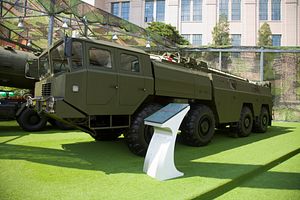Some defense and security links ahead of the weekend:
The Chinese military released images of an intercontinental ballistic missile capable of striking the United States. The People’s Liberation Army’s newspaper allegedly ran “pictures of Chinese soldiers test-firing a Dongfeng-31 missile, which is said by experts to be able to carry nuclear warheads 8,000 kilometres (4,960 miles),” according to Agence France-Presse. The AFP report could not verify the images, but they were posted on sohu.com and attributed to the PLA newspaper. A report in the South China Morning Post contains the images and argues that the nuclear missile drill portrayed in the images is intended to warn the U.S. “not to meddle” in the region. The SCMP report cites one analyst who says that “The disclosure of the Dongfeng-31 at this time obviously aims to respond to the United States’ two big military moves in Japan, which make Beijing believe it is going to meddle in the territorial disputes between China and Japan.”
As Flashpoints readers may have heard, the U.S. air force was gripped by scandal after 34 Air Force officers were caught cheating on a nuclear proficiency test — a revelation that followed an investigation of other officers for drug use and inappropriate behavior. U.S. Secretary of Defense Chuck Hagel has ordered a full review of U.S. nuclear forces after these revelations. Given the fact that the U.S. might be looking at a $1 trillion bill for its nuclear forces over the next thirty years, it seems prudent to audit its current capacity and readiness.
The Jakarta Post has a fascinating report out on the Indonesian military. As the largest nation in ASEAN, Indonesia’s hard power is an important contributor to security and stability in a densely trafficked region. The report notes that Indonesia is “accelerating efforts to strengthen deterrence by overhauling its structure to allow for faster troop deployment, expanding the Marine Corps and procuring long-range offensive weaponry.” The report also notes a troubling state of affairs in Indonesia regarding potential threats from Australia. Indonesian Defense Ministry officials have warned that Australia’s tow-back policy “may soon ignite conflict” and one member of the House of Representatives defense, intelligence, and foreign affairs committee notes that in the coming year, “The greatest threat will obviously be from Australia.”
A piece by Raja Menon in The Hindu examines the reasons that India and Pakistan maintain nuclear arsenals, focusing on the nature of the asymmetry between their respective doctrines (which are ambiguously stated).
News regarding the U.S. plan for Afghanistan wasn’t all too positive this week, with the Pentagon announcing an ultimatum of sorts to the White House: keep at least 10,000 troops in Afghanistan post-2014 or none at all. While the White House has refused to comment on the Pentagon proposal, a top U.S. commander in Afghanistan, Army Lt. Gen Mark Milley says he expects to see more “suicide-type, high-profile, spectacular attacks” in the country. Milley’s warning may be apt considering the deadly suicide attack at a Kabul restaurant that killed 21 this week.

































